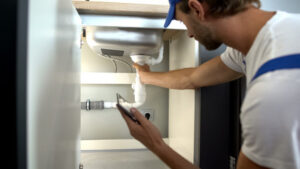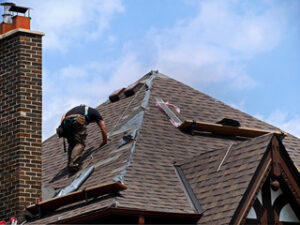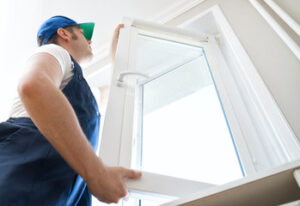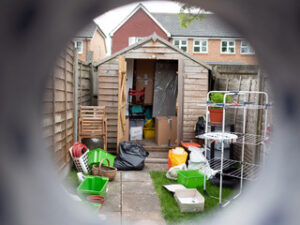Epoxy floor coatings are a stylish and durable way to keep your garage, workshop, or warehouse looking its best. Certain epoxies have additives like gravel, aluminum oxide, or polymer grit to increase traction and reduce the risk of slippage.
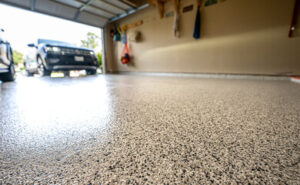
These floors are also non-porous, so water, stains, cleaning chemicals and paint won’t penetrate the surface. These benefits make epoxy the choice flooring for commercial and industrial facilities. To learn more, visit https://www.surfaceprosepoxy.com/.
If you’re concerned about water damage to your floors in your home, industrial or commercial property, epoxy is a durable solution that can help. It’s easy to clean, stain resistant, and can withstand heavy traffic and impact. It also comes in a variety of colors and styles, so you can create a unique look for your space.
Epoxy floors are also chemical-resistant, making them a great choice for industrial environments where chemicals can spill or leak. This is important because chemical-resistant flooring can reduce the risk of a dangerous reaction, as well as meet industry safety standards. You can also use an epoxy coating in your garage, basement, or workshop to prevent moisture and dirt from damaging your equipment.
Before applying an epoxy floor, you should make sure the concrete surface is properly prepped and cleaned. It’s important to remove any oil, grease, or other contaminants. Then, test the concrete for previous layers of coatings by pouring a small amount of water onto it. The water should soak in, not beads on the surface. If the water beads, the concrete is not ready for an epoxy coating.
During the application process, you should use tools like squeegees and spiked rollers to ensure even distribution of the epoxy. This will also eliminate air bubbles, resulting in a smooth finish. Additionally, you should allow the epoxy to cure for the time recommended by the manufacturer. Otherwise, it may not bond with the concrete.
While epoxy is known for its durability, it can still be damaged by water and other liquids if left untreated. For example, a broken pipe, spilled mop bucket, or flooded storage room can saturate upper level floors and seep down to the lower levels. Epoxy can protect your floors from this kind of damage and keep them looking new for years to come.
If you’re considering epoxy flooring, it’s important to remember that the material isn’t impenetrable. If you want to maintain the life of your epoxy floors, it’s essential to sweep them regularly and wipe them down with a damp cloth. This will prevent mildew and mould from growing on the surface.
Chemical-resistant
Epoxy floors have become a popular flooring option for both homes and businesses. They are easy to clean, durable, and provide a beautiful look that can enhance any space. They are also a great choice for environments that are prone to chemical spills, as they can be cleaned up easily and without damaging the concrete underneath. This type of floor is a good choice for car dealerships, restaurants, and warehouses.
One of the best things about epoxy flooring is that it can withstand almost any type of chemical. This is especially important for environments that are prone to oil or chemical spills, as these substances can damage other types of flooring surfaces. Additionally, epoxy floors are impermeable, which means that they can prevent these substances from seeping into the underlying concrete and causing damage.
There are many different types of epoxy resins, and each has its own advantages and disadvantages. Some are more acid-resistant than others, and some require a special coating to protect the surface from chemicals. For this reason, it is important to research the different options available before choosing a flooring solution.
In addition to being chemical-resistant, epoxy is extremely durable and long-lasting. It is also non-porous, which makes it resistant to stains and bacteria. Additionally, epoxy is easy to clean and can withstand harsh cleaning products. This will reduce your overall maintenance and cleaning costs.
The durability of epoxy flooring is a result of its high-density polymer structure. This material is able to withstand the stresses of heavy equipment and machinery, as well as high temperatures. The hardness of the epoxy also makes it resistant to cracking and peeling.
Epoxy is available in a variety of colors and can be applied to most surfaces, including concrete. Some types of epoxy are solvent-based, while others are water-based. Solvent-based epoxies are more volatile and emit odors, while water-based epoxies do not. However, solvent-based epoxies have a shorter life span than water-based ones.
It is important to choose a quality installer when choosing an epoxy floor. A bad installation job can damage the integrity of your new floors, which will require costly repairs. In addition, a bad installation can cause the epoxy to chip or peel. To avoid these issues, it is best to work with an experienced contractor who specializes in the installation of epoxy floors.
Durable
If you’re looking for a durable floor, one that can withstand the pressure of heavy machinery and daily foot traffic, epoxy flooring is an excellent choice. In fact, it is up to three times more durable than concrete floors and is a great option for industrial settings. This material can withstand high impact, is resistant to corrosion and chemical spills, and is easy to clean. However, it is important to note that the durability of epoxy floors depends on how well it is installed. It is important to hire a certified flooring specialist to ensure the installation of the epoxy flooring is done correctly and meets strict Australian standards.
The best way to keep an epoxy floor durable is by implementing regular maintenance practices. This includes sweeping or vacuuming the floor regularly to eliminate dirt, debris, and abrasive particles that could scratch or damage the surface. In addition, cleaning the floors with a non-abrasive solvent will help to reduce stains and maintain a glossy appearance.
Another way to protect your epoxy floor is by using walk-off mats and entry rugs. This will reduce the amount of dirt and moisture that is tracked onto the floor, preventing damage and increasing longevity. It is also important to conduct regular inspections of the floors to identify any areas that need attention and repairs.
Finally, it’s also important to consider the type of epoxy product you use. 100% solids epoxy does not contain any water or solvents, which makes it less expensive than other coating products. However, it is important to understand that a 100% solids epoxy will have a shorter pot life, and must be used immediately after mixing.
Epoxy flooring is a durable, long-lasting floor that looks beautiful and provides an attractive finish to your home or business. Its hardness and strength make it a suitable alternative to many other flooring options. It can withstand the pressure of heavy machinery, chemical spills, and daily foot traffic. It is also resistant to scratches and abrasions, making it ideal for commercial applications. In addition, it can be customised with decorative flakes to suit your aesthetic preferences.
Easy to clean
While epoxy floors are extremely durable, they can still get dirty. Fortunately, they are easy to clean and can be cleaned up quickly when spills happen. In addition, they are non-porous, which means that if there are oil or chemical spills, they will not seep into the floor and will be easy to clean. This makes them ideal for commercial areas that need to withstand harsh chemicals.
If a spill happens on an epoxy floor, it is best to wipe it up immediately before the liquid has time to soak into the floor. Then, use a mop and warm water to clean the floor. You should also sweep the floor regularly to remove dirt and dust. Sweeping the floor before mopping prevents abrasive particles from scratching the epoxy. A soft-bristle broom is the best tool for this purpose.
After the floor is thoroughly mopped, you can rinse it with a hose or squeegee. If the floor is very dirty, it may be necessary to scrub the area with a kitchen scrubbing sponge or a soft deck brush. If you need to scrub an area of the floor, make sure that you remove all the furniture and other objects before doing so. You should also be on the lookout for large stains, scratches, or cuts in your epoxy floor as these can cause damage to the flooring surface.
It is important to keep in mind that epoxy floors are not immune to stains from chemicals, such as oil, rust, and other toxins. You should always clean these stains from your floors as soon as they occur so that they do not soak into the concrete and cause permanent damage.
One way to avoid stains on your epoxy floor is to sweep the floor regularly and place a walk-off mat at the entrance of your garage. This will collect the dirt, sand, and moisture from your shoes, which will help to protect the floor. You can also use pads under your motorcycle jack or welding mats to prevent them from scratching the floor.
Once the floor is clean, it should be protected with a wax. A waxed floor will be much easier to clean and will help to protect the epoxy from scratching and denting. In addition, it will look shiny and new for longer.
